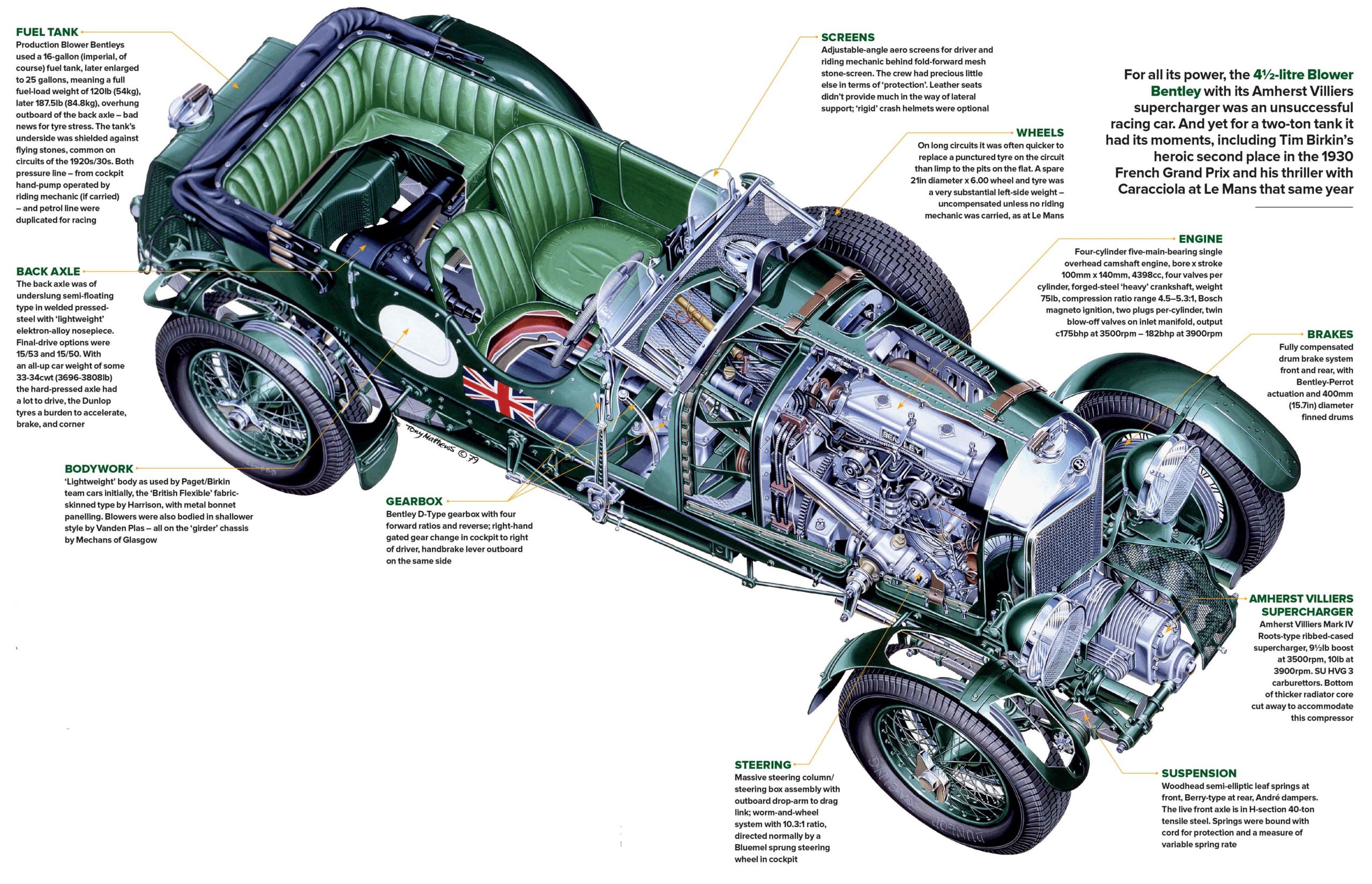The legend of the Blower Bentley: magic... or myth?
Four Le Mans wins from 1927-30 made Bentley a household name, while its drivers became the poster boys of their day. Doug Nye inspects the legendary supercharged 4½-litre ‘Blower’ that was supposed to take the marque to the next level. In reality was it magic, or is its charisma based on a myth?
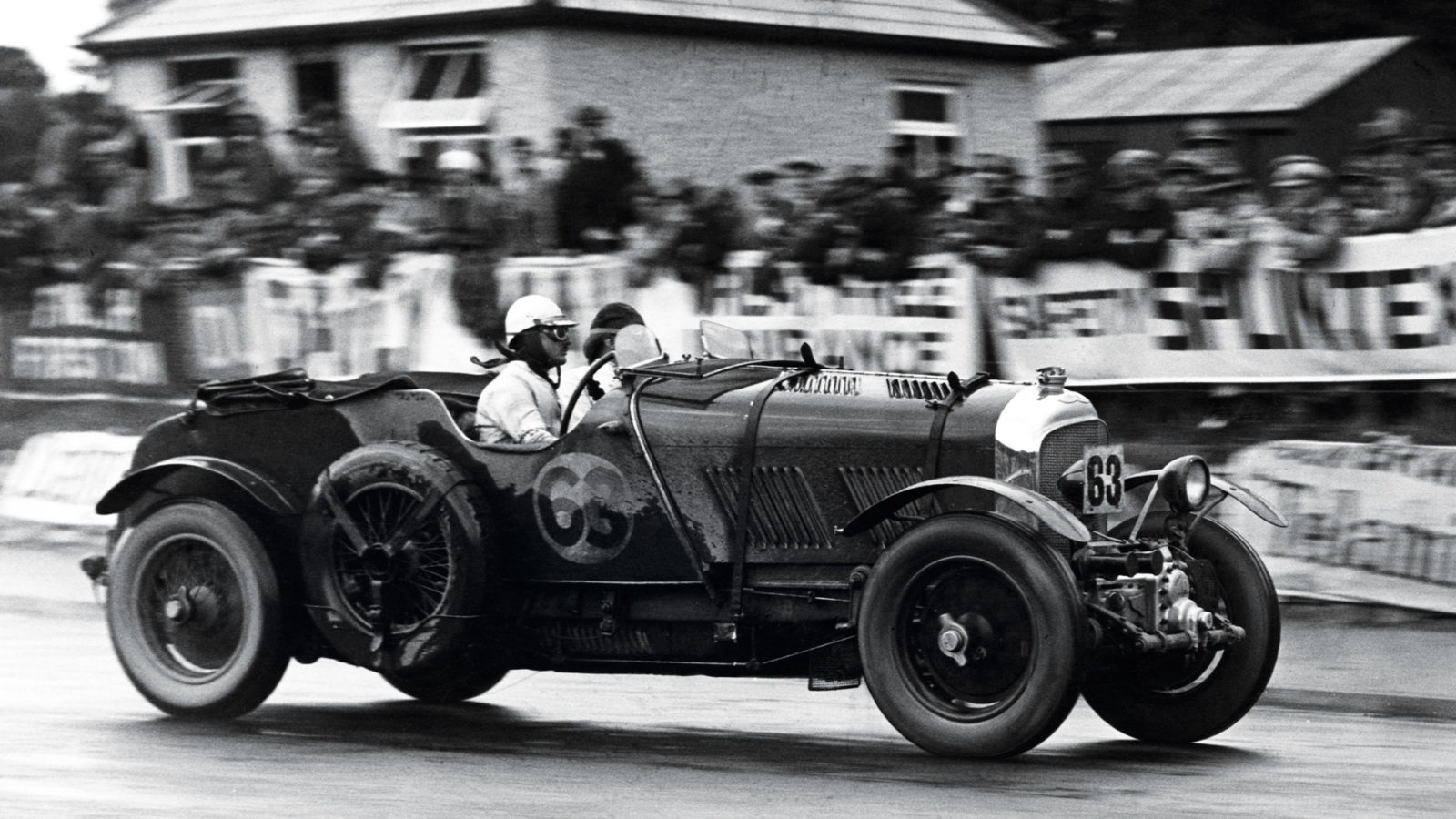
‘Tim’ Birkin in his Blower Bentley at Ards, Belfast, in the 1929 TT – two months after winning Le Mans
Enthusiast tastes change inevitably with each generation. Most of us grow up in motor sport entranced by the successful cars of our personally formative era. Therefore it’s perfectly natural for enthusiasts in later life to hold those same cars in great esteem, despite the passing years. And when we finally lose interest –living or dead –a fresh majority fanbase replaces us, with broadly different tastes absorbed from a later era. It’s a natural, right and proper progression – but a broader perspective is always healthy…
When I first became involved in the racing world of the early 1960s, I found legions of older-generation enthusiasts positively misty-eyed over the great cars of the 1920s – the straight-eight Delage Grand Prix cars of 1926-27 seemed especially iconic, while a particularly tweedy or blazered band of snowy-haired oldies would blether on about “the great days of Bentley at Le Mans”. A slightly younger group glazed over nostalgically at having seen “the Mercs and Auto Unions” blasting around Donington Park in 1937-38, “…leaping head-high over the Melbourne hump”.
But even then there were younger people with wider tastes, wider interests – not least those, usually with family heritage, who even then would bubble on about veteran cars, pre-1904 – so ours has always been a catholic church, of broadest taste. Perhaps I most recall the burgeoning enthusiasm of the Bentley fraternity whose faith was founded – totally justifiably – upon those five Le Mans 24-Hour race wins, 1924 and 1927, ’28, ’29 and ’30 inclusive. What a heady legend the Bentley tale provided.
Illustration: Tony Matthews Images
The Le Mans-winning Bentley models were, in order, the ‘90mph’ 3-litre four-cylinder of 1924 and 1927, the enlarged and more powerful ‘92mph’ 4½-litre four-cylinder of 1928, and ultimately the 6½-litre six-cylinder Speed Six of 1929 and 1930. The original 3-litre was a large machine, in keeping with designer W.O. Bentley’s basic concept of building-in rugged reliability, but viewed in isolation it looked more trim, fit and spartan than what would follow. The 4½-litre looked distinctly more muscular, deeper-chested, husky – while the Speed Six just looked pretty much gigantic. Ettore Bugatti – whose cars were overtly more clever in concept, more elegant, lightly-scantled, recognising the performance advantage of power-to-weight ratio – famously described the Bentley as being “the fastest lorry in the world”, but then he would, wouldn’t he, having just had his finest outrun and/or outlasted where it mattered, and where the prize and bonus (and resultant sales) money was earned, at Le Mans.
But if the great Bentley sports cars might seem almost gratuitously big and hefty, and over-engineered – and overweight – they also conveyed an image of imperial British might which was much in keeping with the tenor of the ’tween-war years. Of course Great Britain’s place as a previously dominant world power had sustained an almost crippling body blow by the cost – in every respect – of World War I. In motor sporting terms Sunbeam had achieved some fleeting British industrial prestige in Grand Prix racing 1923-24, only to flare and fade. Bentley did very much better in the sports car field, winning overall where it really mattered, not just accumulating mere class success and sometimes dominance where, beyond the motoring fraternity, it barely impacted one iota upon general public perception – as with Austin, MG, Riley and (whisper it) Talbot and Aston Martin too.
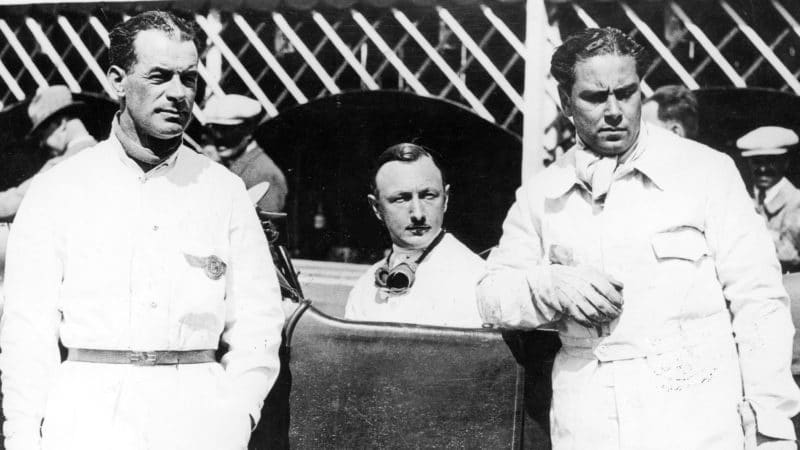
Bentley Boys, from left, Frank Clement, Birkin and Woolf ‘Babe’ Barnato
The Britannic Bentleys attracted sports-minded backers of celebrity social standing. Multi-millionaire Woolf ‘Babe’ Barnato led the way, with aristocratic, daring, talented, celebrity star driver Sir Henry ‘Tim’ Birkin the darling of the popular press, and of the London society scene. ‘The Bentley Boys’ were celebrated as courageous sportsmen out there racing for Britain when not cavorting dinner-jacketed in five-star London hotels, restaurants and clubs – cutting a swathe through debutantes, starlets and minor female nobility alike.
The newspaper and magazine image of Birkin showed a cravat and polka dot scarf-wearing hero to be idolised. In person the Nottingham lace-family scion was slightly built, rather shy and diffident in nature, and spoke with a distinct stutter. Through the 1920s and ’30s a relatively small fortune could go a tremendously long way, and amongst The Bentley Boys, Henry Birkin through his racing exploits gained tremendous celebrity while turning a modest inherited fortune into a smaller one, and very quickly into near penury…
The ‘Blower’ Bentley contributed considerably to Birkin’s failing personal fortune. This supercharged 4½-litre model assumed star status in 1929-30 thanks largely to Birkin’s lap record-shattering exploits with it. Contrary to the legend which the Blower Bentley would become, in period it proved an unreliable racing failure. But celebrity status often ignores reality, and Ian Fleming’s choice from 1953 of the Blower as his character James Bond’s preferred personal transport conferred a glamour espoused by the largely uncritical, unknowing many… Walter Owen Bentley was himself outspokenly sceptical – to supercharge a Bentley engine was to “pervert its design and corrupt its performance”. But Birkin had the approval of company financier Woolf ‘Babe’ Barnato, of the South African diamond-mining zillions…
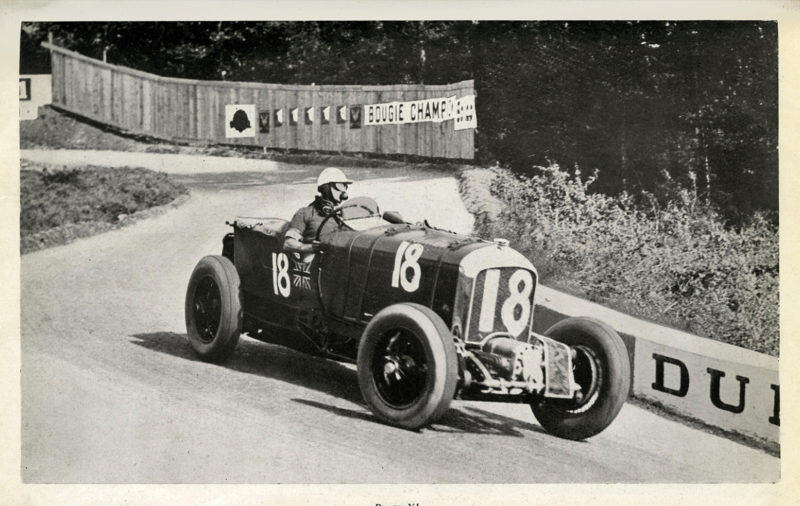
Birkin finished second in the 1930 French Grand Prix at Pau in his stripped but still hefty Blower Bentley
As early as 1926 ‘W.O.’ had realised that his initial 3-litre model was not going to last long as a racing front-runner. Even a leading Bentley Drivers Club luminary of the 1980s dismissed the 3-litre to me as being a car which could only climb Prescott so slowly “I was shaking hands with every marshal along the way”.
“Birkin craved even more power than the 4½-litre could offer”
The prototype 4½-litre engine was fitted to the 1927 3-litre Le Mans practice car. At Le Mans, co-driven by Frank Clement/Leslie Callingham, it set fastest lap before being eliminated in the famous White House crash. The car was christened Old Mother Gun and it would win the 1927 GP de Paris at Montlhéry (shared by Frank Clement/Jack Duller), and Le Mans in 1928 (Woolf Barnato/ Bernard Rubin). The 4½-litre used a 10ft 10in wheelbase chassis as standard, while nine special ‘lightweight’ cars were added to customer order on 9ft 9½in frames. All vintage Bentley frames were made by Mechans of Glasgow.
The ambitious Tim Birkin craved even more speed and power than the 4½-litre could offer and despite W.O.’s vocal opposition Barnato backed his friend’s proposal and engineer Amherst Villiers – who had been so successful with Raymond Mays’s Villiers Vauxhall Supercharged special – was commissioned to design a Roots-type supercharger to give the four-cylinder engine “real vim!”.
Birkin set up a workshop in partnership with Mike Couper in Welwyn Garden City to prepare a team of special supercharged ‘Birkin Blower’ Bentleys. Supercharging boosted the 4½-litre’s output from 110bhp to 175bhp, but Villiers specified a special counterbalanced crankshaft for Birkin & Couper’s race cars which was not used on the production version, causing them centre-main bearing failures.
Fifty 105mph Blowers were to be built, matching the minimum production requirement for Le Mans to permit Birkin to enter his cars there in 1930. News of the uprated model’s production was broken in The Autocar of July 5, 1929, but Birkin’s enterprise would not have been possible without the initially lavish financial backing of the eccentric, beret-wearing (and bulky) Hon. Dorothy Wyndham Paget – spendthrift millionairess daughter of Lord Queenborough and Pauline Payne Whitney, of the immensely wealthy American Whitney family. Miss Paget was better known as a race horse owner, including the legendary Golden Miller, five times winner of the Cheltenham Gold Cup and once of the Grand National.
She would become famous for backing losers, and sadly the Blower Bentley – despite its modern-era charisma – was one of them. Bentley authority Clare Hay found that five ‘proper’ Birkin Blowers were produced. The first was registered ‘YU 3250’ although that registration’s history amongst Bentleys is complex. The second car became ‘UU 5871’ reworked as the Birkin Single-Seater – the Brooklands Outer Circuit car which would become the only Blower ever to win a race in period. The third car was registered ‘UU 5872’, rebuilt on a 9ft 9½in chassis and rebodied by Vanden Plas to become “Birkin’s favourite road car”. Chassis No4 was registered ‘UR 6571’ – and the fifth became ‘UR 9155’ assembled from spares on a 10ft 10in chassis, possibly re-used from one of its older sisters.
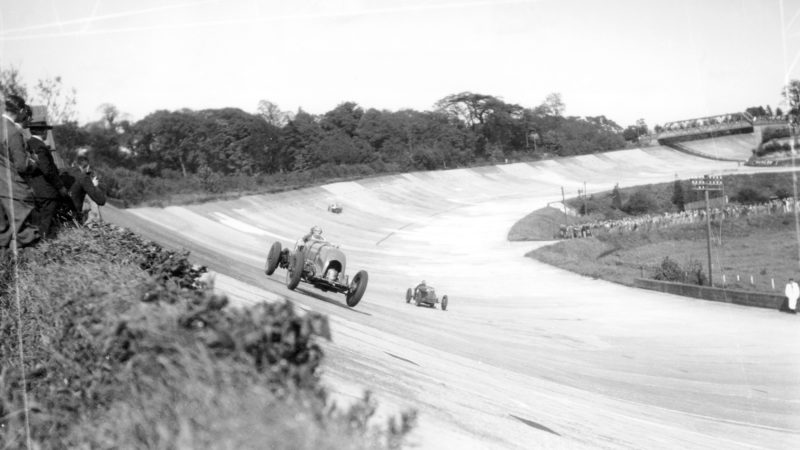
Birkin’s red Blower Bentley Single- Seater, which did actually win races, is seen at Brooklands, practically airborne on the hump at the Members’ Banking where the river bridge had sunk. In 2012 the car was sold by Bonhams for £5m.
The first Blower Bentley to be raced was ‘UU 5871’ fitted with a high-sided Harrison ‘British Flexible’ body and driven by Birkin in the Brooklands 6 Hours of June 29, 1929. It proved rapid – but retired, possibly with lubrication trouble as the nose-mounted supercharger obstructed cooling airflow around the engine’s sump.
Only one Blower – ‘UU 5871’ – contested the Brooklands 500 Miles on October 12, amongst an entry including three unblown 4½-litre cars and one Speed Six. Frank Clement and Jack Barclay won in their 4½-litre, with ‘Sammy’ Davis and Clive Dunfee finishing second in the Speed Six. Birkin retired when an exhaust joint disintegrated, as the estranged and doubting W.O. Bentley had predicted pre-race.
The big Speed Six was inherently lower-stressed and more reliable than even the unblown 4½-litre team cars, and two of them promptly finished 1-2 in the 1930 Brooklands Double Twelve (24-hour race) on May 9/10. Three Blowers failed to finish – ‘UU 5872’ for Birkin/Jean Chassagne, ‘YU 3250’ for Glen Kidston/Clive Dunfee and ‘UR 6571’ for Dr J.D. Benjafield/Baron d’Erlanger. Birkin had led at over 94mph, only to hit a concrete kerb when trying to pass back-markers on the Finishing Straight, cracking his car’s chassis frame. Dunfee had a valve break. Benjafield’s car had its back-axle pinion strip, he pushing it manfully back towards the pits where team manager Bertie Kensington-Moir greeted him with, “Come on old love, what can I do for you?”.
Harcourt-Wood, left, and Birkin, far right, oversee their mechanics’ work at the Brooklands 500 Miles, 1929
Le Mans on the weekend of June 21/22, 1930, saw the same three team Blowers running, co-driven by Birkin/Chassagne, Dunfee/Beris Harcourt-Wood and Giulio Ramponi/Dr Benjafield. Bentley domination was said to have influenced the fact there were only 19 entries (this was the middle of the Great Depression), and when the Blowers suffered overheating on the poor French fuel provided, pure benzole was substituted, requiring a modification to raise the compression. The team then ran out of time to convert all three cars, so the Dunfee/ Harcourt-Wood Blower non-started.
Birkin was sent out as hare to draw the Caracciola/Werner Mercedes-Benz SSK to destruction. ‘Tiger Tim’ loved the sheer theatricality of what became their duel, surprising the immensely capable Caracciola by passing him near the end of the Mulsanne Straight, “at 120mph – with two wheels on the grass verge”. The Blower threw a tyre tread, but Birkin rejoined, set fastest lap at 89.69mph, then had another tyre fail. Bentley’s almost perverse disregard for adding weight to their cars was perhaps even more marked when applied to the Blowers as “…the extra power would compensate”. A point missed?
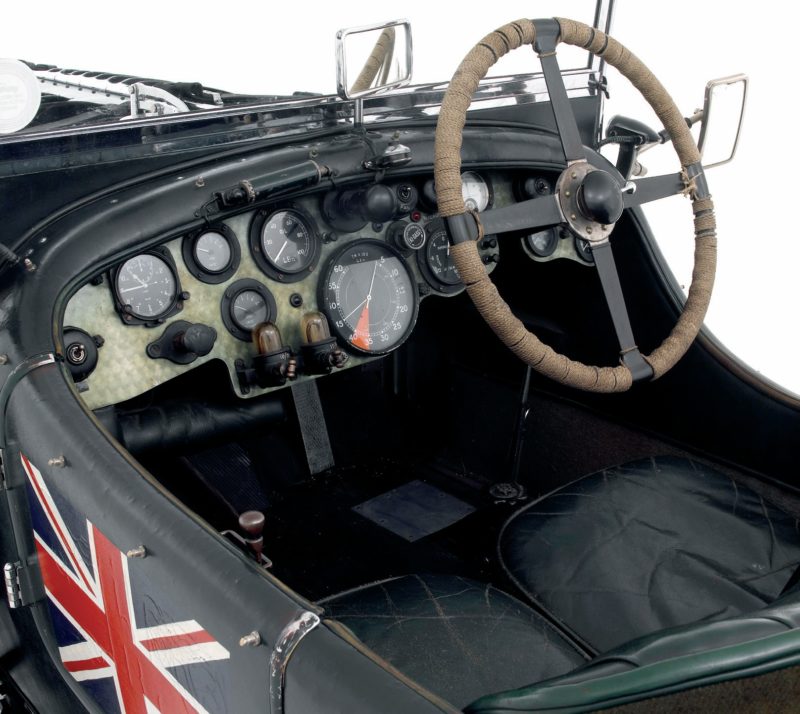
The National Motor Museum’s 4½-litre Blower – note the cord-bound steering wheel for grip
The Blower Bentleys had a notably high centre of gravity and their speed and power combined with it to compromise tyre life even more than their basic 34cwt (3808lb) burden. Barnato took over harrying the Mercedes in the Speed Six he shared with Glen Kidston, and during the night the German challenge collapsed. Late on the Sunday morning Birkin’s Blower broke a valve, and Benjafield’s a piston. The Bentley Speed Sixes finished 1-2, with Barnato winning Le Mans for the third time in consecutive years.
In 1931, Bentley Motors Ltd entered receivership. The Boys had had their fun
The Birkin/Paget team contested the Irish GP on July 19 since the factory team had been shut down. Caracciola’s Mercedes and Birkin’s Blower again locked horns, but broken oil pipes and lubrication difficulties left Birkin to finish fourth in ‘UU 5872’, while Chassagne in ‘UR 6571’ and Harcourt-Wood’s ‘YU 3250’ subsided.
Birkin was effectively flat broke. Dorothy Paget had told him her sponsorship was ending. The three-Blower entry for the TT at Ards on August 23 was in desperate hope of attracting an alternative sponsor. Caracciola’s Mercedes was found to be using an oversized supercharger pre-race and was disqualified. But the Alfa Romeos of Tazio Nuvolari, Giuseppe Campari and Achille Varzi benefited greatly on handicap. In rain, Birkin crashed his ‘UU 5872’ at Ballystockart Bridge, Bertie Kensington-Moir in ‘YU 3250’ finished 11th and Benjafield in ‘UR 6571’ placed 12th.
On September 21, the 1930 French Grand Prix was contested to Formule Libre rules on a road circuit outside Pau. Birkin ran ‘UR 6571’ to terrorise the home Bugattis on the long straights while being re-caught around the squiggles. His sports car famously finished second overall, beaten only by ‘Phi-Phi’ Etancelin’s almost out-of-fuel Bugatti which would not have lasted another lap. But, still, the Blower Bentley had yet to win a single motor race.
The swan-song of the Birkin/Paget team followed on October 4 in the Brooklands 500 Miles race. Birkin/Duller shared the single-seater ‘UU 5871’, George Eyston and Harcourt-Wood ‘UR 6571’ and Benjafield/Eddie Hall ‘UU 5872’. The reliable latter pairing in their essentially unreliable but well-nursed Blower finished second, averaging 112.12mph for the distance, and throwing a rear tyre tread just as it crossed the finishing line. Eyston/ Harcourt-Wood retired with magneto drive failure. The single-seater misfired home in ninth place.
Dorothy Paget’s investment in Birkin & Couper Ltd’s Blower Bentley programme had also misfired. She would retain the Single-Seater for six years beyond Birkin’s death in 1933, and before the end of 1930 the three road cars were offered for sale.
On July 10, 1931, Bentley Motors Ltd itself entered receivership. The Boys had had their fun… but the Bentley marque – and the Blowers – would live on; the latter eventually proving to be rather more impressive road cars than they ever truly were as racers…
